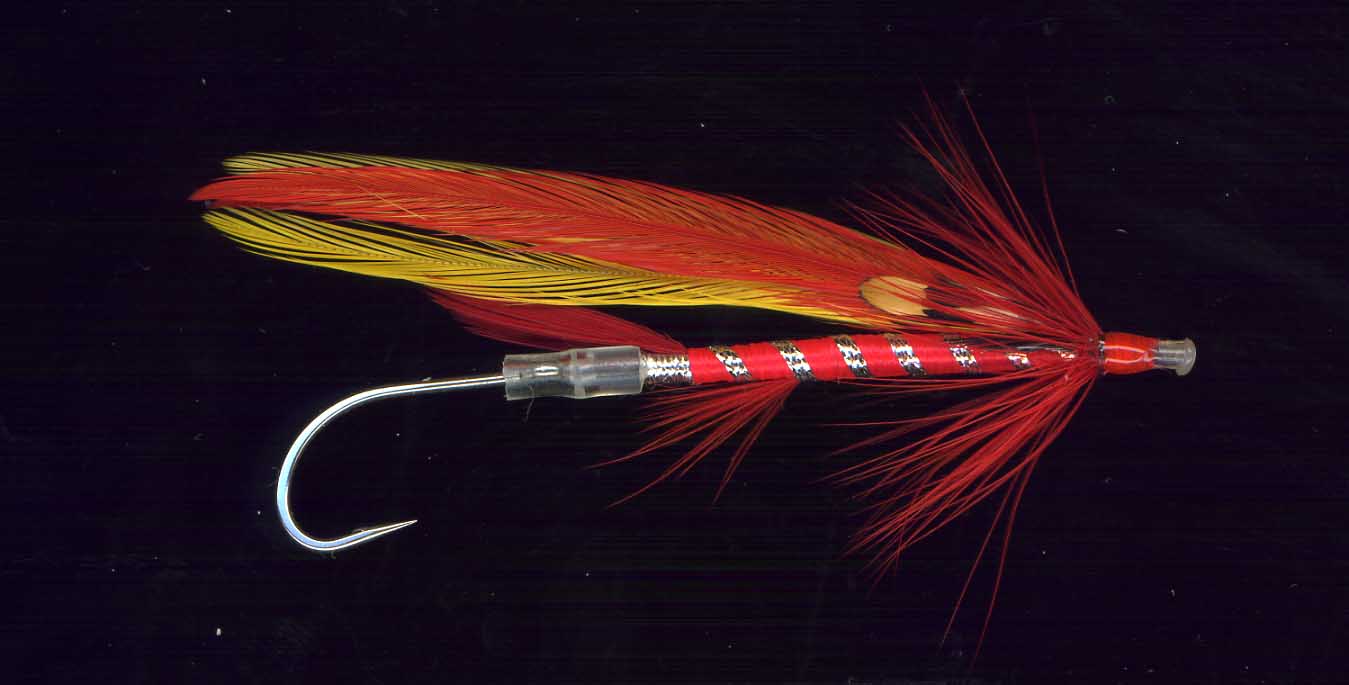Welcome to River Magic
Stillwater Slim on the Line... August 17, 2010
|
 Streamer Flies for Fall Atlantic Salmon
As our fall Atlantic salmon season progresses, Nova Scotia rivers become cooled considerably by frosty nights. Usually fishing begins slowly in the morning, improving as the sun warms the water at mid-day. Salmon, especially males, respond with a territorial display of aggression toward intruders or competitors, and, as usual, their curious nature. Bright colors like red, yellow and orange, so prevalent in the fall, become preferred. So, brightly colored streamer flies that trigger aggression or curiosity can be very successful flies in the fall. Streamers like the Grey Ghost and Mickey Finn are excellent examples
In the fall Atlantic salmon enter New Brunswick’s Cains River, a Miramichi tributary. In 1924, a series of Atlantic salmon streamer flies began to be developed, eventually becoming known as the Cains River Streamers. An angler from Chicago, Mr. Fred M. Peet, is credited with several of the twenty-some flies in the set, but other anglers also contributed patterns. Nonetheless, these flies have a unique style and character that makes them well suited to their task.
Other salmon flies developed for the Cains include the Copper Killer, still very popular today. It is basically a copper and hot orange squirrel tail pattern with fluorescent butts, the color scheme making it ideal for fall salmon fishing anywhere. Another old fly very popular on the Cains and other fall salmon streams is a Maine fly, the Chief Needahbeh, named for its developer, Chief of the Penobscots, a Maine tribe.
The Chief Needahbeh is everything a fall salmon fly should be, a fiery-colored streamer that is sure to get the attention of a big fall soaker. In Nova Scotia we use barbless hooks that aid in releasing large salmon, so we’ll tie our Chief as a tube fly so that we can use a small barbless hook on the large streamer. If you’d prefer to tie it on a regular streamer hook, just ignore all the tube stuff.
For a 2 ½” streamer, a 2” tube is used. Heat each end of the tube with a flame to form a small lip. Leave 1/8” to ¼” bare at each end. This allows a soft plastic hook sleeve to be installed at the rear. It also allows two Chiefs to be connected together via a soft plastic sleeve if you want a 5” tandem streamer, sure to double your pleasure!
Chief Needahbeh
Thread: Fluorescent red or hot orangeTube: Hard 1/16” plastic tube, 2” Tag: Flat narrow silver tinsel or Flatbraid Tail: Back-to-back red goose shoulder strips Rib: Flat narrow silver tinsel or Flatbraid Body: Fl red UniStretch or floss, with a throat, or fin, of red hen hackle fibers positioned 1/3 up the body Wing: Two back-to-back yellow cock neck or saddle feathers covered by two back-to-back red cock neck or saddle feathers Sides: Jungle cock Hackle: Red hen saddle tied as a collar Head: Fl red thread coated with clear Angler’s Corner Wet Head Cement Hook sleeve: Soft 1/8” plastic, red or clear Hook: Mustad C68S, barbless, size 4
Please stay on the line … |